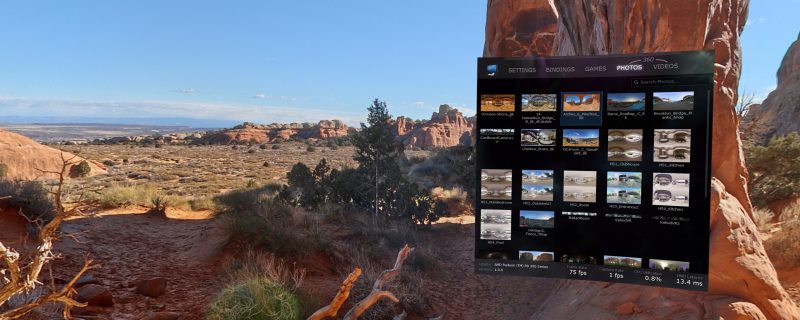
The first computers didn’t have dedicated screens to display information and, thanks to the emergence of affordable VR technology, future computers might not need them either.
Wind back 70 years and room-sized computers such as the ENIAC spat out their data on hole-punched cards (aka IBM cards or Hollerith cards) and paper tape. You needed a separate device to decode them. It wasn’t until the 1950s that CRT displays started to appear. First in the form of green screen Video Display Terminals and then as TV-style monitors plugged in via RF or composite video connections.
Computers and displays have been inseparable ever since.
But the emergence of virtual reality and augmented reality could change all that. In AR, a combination of Microsoft’s HoloLens and the Windows Holographic shell promises to turn any room into a 3D desktop, hanging apps on the wall like paintings. Instead of point-and-click, you’ll wave and air-tap.
Enter the virtual desktop
Virtual Desktop, an app for the Oculus Rift and HTC Vive, arguably goes one better. It recreates your Windows desktop in VR, enabling you to browse the web, watch videos or even play games on a giant virtual display.
How big? “Once you’re in virtual view,” says Engadget’s Devindra Hardawar, “you can resize the size and distance of the desktop, from the equivalent of sitting six feet away from a 60-inch display, to having it tower before you as if it were on a enormous IMAX screen.”
While you don’t get any real benefit working in Office apps, more visual tasks (such as editing photos or video) become a whole new experience in VR.
Virtual Desktop vs SPACE
“Using a tool like Adobe Premiere was fine,” writes Venturebeat’s Jeff Grub. “I liked having the option to really blow up the part of the timeline I was cutting up. Watching videos is impressive [too]. I loaded up several 360-degree YouTube videos, and Virtual Desktop handled them without an issue. Vive doesn’t have a VR video player yet — at least not one I’ve found — so having the option built into a fully functional computing environment is really nice.”
Of course, Virtual Desktop isn’t your only VR computing option. SPACE for the Oculus Rift and HTC Vive is currently in beta and does things a little differently. Instead of recreating your Windows desktop in VR, SPACE enables you to open six windows and arrange them to make the ultimate in multi-monitor setups.
Like Virtual Desktop, working in VR takes some getting used to. There’s currently no way to look down at your physical keyboard and this can make text entry a tricky prospect. Virtual keyboards provide a cumbersome solution. Speech recognition another. Using a camera mounted on the front of a VR headset (like the Vive) might be the answer.
This would allow elements of the real world to mix with the virtual one in a ‘merged reality’, something Intel has been working on with its forthcoming Project Alloy headset.
Until then, VR teases a revolution in the way we interact with our PC desktops. It’s proof, if any were truly needed, that there’s more to virtual reality than games.
Upgrade to an amazing virtual desktop, powered by a SAPPHIRE VR-Ready graphics card.


















